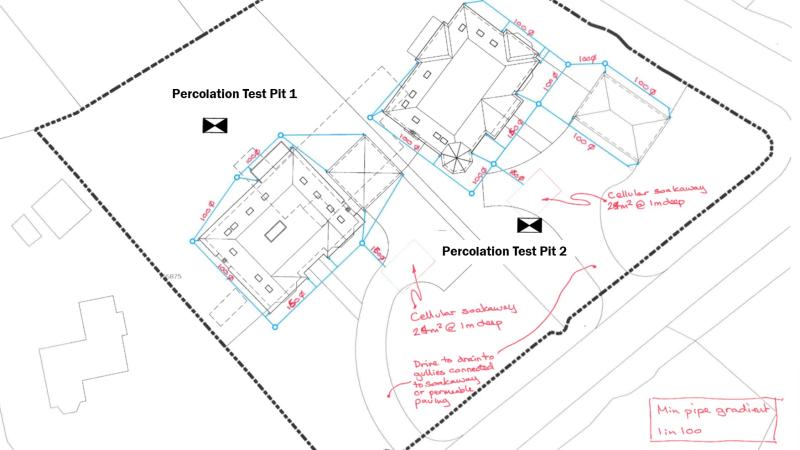Drainage Strategy - Surrey
Introduction
GO Contaminated Land Solutions provide professional and comprehensive Drainage Strategy services. As a leading environmental consultancy, we specialise in providing tailored drainage solutions for property developers, architects, and chartered surveyors across the county of Kent.
A robust Drainage Strategy is a fundamental aspect of any construction project, ensuring the efficient management of surface and foul water, preventing flooding, and safeguarding the local environment. At GO Contaminated Land Solutions, we understand the unique challenges posed by Kent's diverse landscapes and rich heritage, and we pride ourselves on delivering innovative, sustainable, and compliant drainage solutions.
Our team of experts combines extensive knowledge with pragmatism to develop bespoke strategies that seamlessly integrate with your project's requirements. Whether you are planning a residential development, commercial complex, or infrastructure project, we are committed to optimizing drainage systems that not only meet regulatory standards but also enhance the overall value and sustainability of your venture.
Trust GO Contaminated Land Solutions to be your reliable partner in navigating the complexities of drainage strategy. Join our growing list of satisfied clients who have benefited from our expertise in delivering environmentally sound and future-proof drainage solutions across Kent's diverse landscapes. Let's build together with a clear vision for a sustainable and successful future.
Drainage Strategies, or Sustainable Drainage Strategies (SuDS) Maintenance Plans can be produced as stand alone documents or to accompany our flood risk assessments.
The aim with SuDS is to attempt as far as practicable to achieve natural drainage of surface water, ideally allowing rainfall to soak into the ground where it falls. In this way aquifers are recharged and the risk of flooding from overwhelmed sewers is reduced. SuDS features include; permeable surfaces, swales, rainwater gardens and ponds. Planning Practice Guidance states: “Where possible, preference should be given to multi-functional sustainable drainage systems, and to solutions that allow surface water to be discharged according to the following hierarchy of drainage options:
- into the ground (infiltration);
- to a surface water body;
- to a surface water sewer, highway drain, or another drainage system;
- to a combined sewer.”
Planning Practice Guidance further advises:
"Multifunctional sustainable drainage systems are those that deliver a wider range of additional biodiversity and environmental net gains such as to:
- ameliorate urban heating and air pollution;
- replenish groundwater resources;
- contribute to biodiversity net gain targets;
- capture and re-use rainwater;
- store carbon;
- reduce the need for carbon-intensive construction techniques and pumped systems;
- release capacity in combined sewerage systems and at wastewater treatment works;
- create and connect valuable areas of blue-green infrastructure
- reduce lifetime maintenance costs; and
- enhance the attractiveness and value of new development by integrating water management with habitat for wildlife and opportunities for amenity and recreation."
What is achievable depends on many factors, including the permeability of the ground, whether there is any contamination present and the nature and scale of the development.
For this project in Croydon, initially percolation tests were undertaken to ascertain the potential scope for the use of SuDS. A Drainage Strategy was prepared together with a report on Above Ground Rainwater Attenuation and Harvesting. The attenuation and harvesting report also included a section detailing the social and environmental benefits of the scheme as required within the planning conditions. A Drainage Maintenance Plan was prepared for both below and above ground stormwater drainage.
Drainage Strategy - Surrey
Housing Development in Kingswood, Reigate & Banstead
The project comprised demolition of a single dwelling and erection of two 5/6 bedroom detached houses with associated car parking and formation of driveway. Formation of new access and closing up of the existing access.
Infiltration or percolation tests were undertaken to BRE365 to measure the water absorption rate of the soil to determine whether the ground conditions were appropriate for soakaways and in order to then calculate the required soakaway capacity. In this instance the ground was found to be suitable and a preliminary drainage strategy sketch was prepared for the development.
Need a Drainage Strategy?
